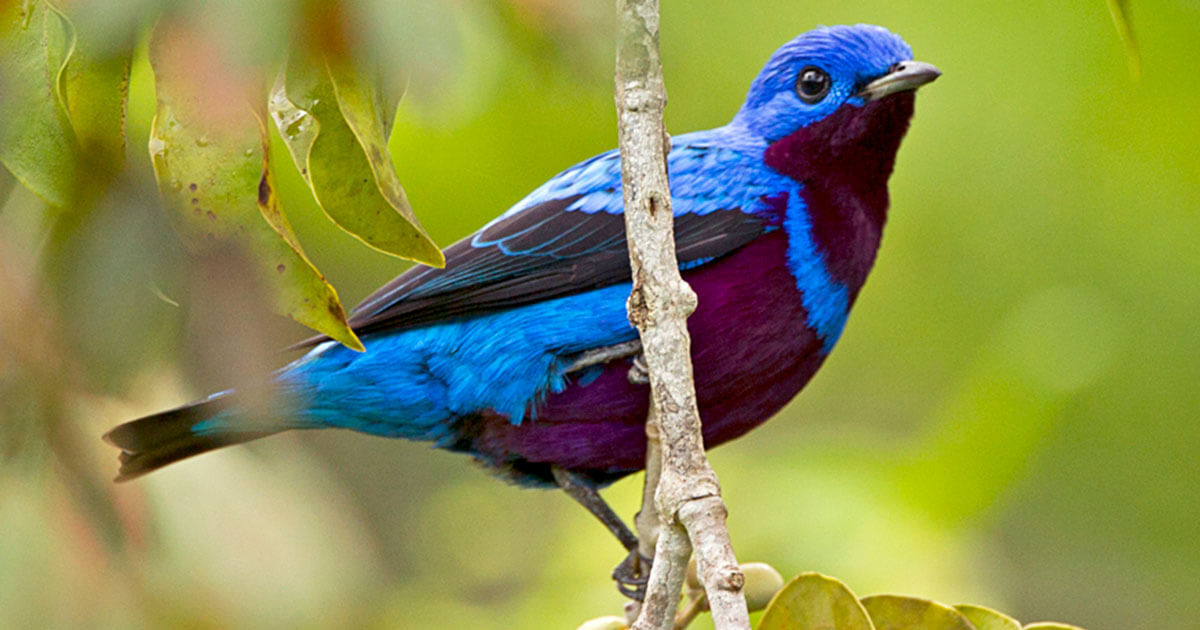Hidden Gems Of Brazilian Birds And Their Secret Habitats

Brazil is home to some of the most amazing birds in the world. From the colorful toucans to the elusive harpy eagle, this country offers birdwatchers a true paradise. Many of these birds live in unique habitats like the Amazon Rainforest, the Pantanal wetlands, and the Atlantic Forest. Each of these places has its own special charm and hosts a variety of bird species. Whether you are a seasoned birdwatcher or just starting out, Brazil's rich birdlife will leave you in awe. Get ready to learn about some hidden gems of Brazilian birds and their secret habitats.
Brazil's Birdwatching Paradise
Brazil, with its vast rainforests, wetlands, and diverse ecosystems, is a birdwatcher's dream. From the Amazon to the Pantanal, the country hosts a stunning array of bird species. Let's uncover some hidden gems of Brazilian birds and their secret habitats.
Amazon Rainforest: The Heart of Biodiversity
The Amazon Rainforest, often called the "lungs of the Earth," is home to countless bird species. Here are some must-see birds in this lush paradise:
Harpy Eagle: One of the largest and most powerful eagles in the world, the Harpy Eagle can be spotted soaring above the dense canopy. Its striking appearance and impressive wingspan make it a sight to behold.
Hoatzin: Known for its unique appearance and unusual digestive system, the Hoatzin is often found near rivers and swamps. Its chicks have claws on their wings, a rare trait among birds.
Scarlet Macaw: These vibrant, colorful parrots are a symbol of the Amazon. Their loud calls and striking plumage make them easy to spot in the treetops.
Pantanal: The World's Largest Tropical Wetland
The Pantanal, a vast wetland in Brazil, is a haven for birdwatchers. Its open landscapes and abundant water sources attract a variety of bird species.
Hyacinth Macaw: The largest flying parrot in the world, the Hyacinth Macaw, is known for its brilliant blue feathers. They are often seen in pairs or small groups, feeding on nuts and fruits.
Jabiru Stork: With its impressive height and striking black and white plumage, the Jabiru Stork is a common sight in the Pantanal. They are often seen wading through shallow waters in search of food.
Toco Toucan: Famous for its large, colorful bill, the Toco Toucan is a charismatic bird that can be found in the Pantanal. They are often seen perched on tree branches, using their bills to reach fruit.
Atlantic Forest: A Biodiversity Hotspot
The Atlantic Forest, a coastal rainforest, is one of the most biodiverse regions in the world. Despite its small size, it hosts a remarkable variety of bird species.
Red-billed Curassow: This critically endangered bird is known for its striking red bill and glossy black feathers. They are often found in the dense undergrowth of the Atlantic Forest.
Golden Lion Tamarin: While not a bird, this small primate shares its habitat with many bird species. Its bright orange fur and playful behavior make it a favorite among visitors.
Black-fronted Piping Guan: This large, turkey-like bird is known for its distinctive black and white plumage. They are often seen foraging on the forest floor for fruits and seeds.
Cerrado: The Brazilian Savanna
The Cerrado, a vast tropical savanna, is home to a unique array of bird species adapted to its open landscapes and seasonal climate.
Greater Rhea: The largest bird in South America, the Greater Rhea, is a flightless bird that roams the grasslands of the Cerrado. They are often seen in small groups, grazing on vegetation.
Blue Finch: This small, brightly colored bird is known for its striking blue plumage. They are often found in the scrublands and open woodlands of the Cerrado.
Crested Seriema: With its long legs and distinctive crest, the Crested Seriema is a unique bird that can be found in the Cerrado. They are often seen hunting for insects and small animals in the grasslands.
Caatinga: The Dry Forest
The Caatinga, a semi-arid region in northeastern Brazil, is home to a variety of bird species adapted to its harsh conditions.
Lear's Macaw: Also known as the Indigo Macaw, this critically endangered bird is known for its striking blue feathers. They are often found in the rocky cliffs and dry forests of the Caatinga.
Cactus Parakeet: This small, green parakeet is often found in the dry forests and scrublands of the Caatinga. They are known for their loud calls and playful behavior.
Pygmy Nightjar: This small, nocturnal bird is known for its cryptic plumage and distinctive calls. They are often found roosting on the ground during the day, blending in with the dry leaves and soil.
Discovering Brazil's Avian Wonders
Brazil's birdlife offers a stunning array of colors and sounds. From the vibrant Hyacinth Macaw to the elusive Harpy Eagle, each species adds to the country's rich biodiversity. Exploring their secret habitats, like the Amazon Rainforest and Pantanal Wetlands, reveals the importance of conservation efforts. These areas not only house unique birds but also support countless other species.
Birdwatching in Brazil provides a unique experience for nature lovers. Whether you're a seasoned birder or a curious traveler, the country's diverse ecosystems promise unforgettable encounters. Remember to respect these natural habitats and support local conservation initiatives.
Next time you plan a trip, consider Brazil's hidden birding spots. You'll not only witness incredible wildlife but also contribute to preserving these natural treasures for future generations. Happy birdwatching!

